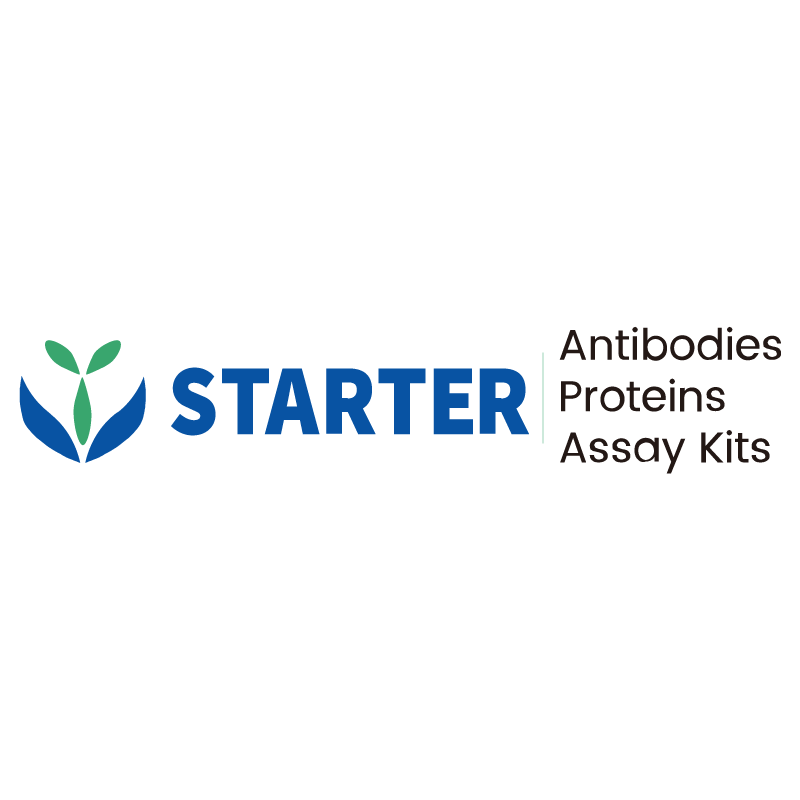WB result of GRM5 Recombinant Rabbit mAb
Primary antibody: GRM5 Recombinant Rabbit mAb at 1/1000 dilution
Lane 1: mouse brain lysate 20 µg
Lane 2: mouse hippocampus lysate 20 µg
Secondary antibody: Goat Anti-rabbit IgG, (H+L), HRP conjugated at 1/10000 dilution
Predicted MW: 132 kDa
Observed MW: 140-300 kDa
Product Details
Product Details
Product Specification
| Host | Rabbit |
| Antigen | GRM5 |
| Synonyms | Metabotropic glutamate receptor 5; mGluR5; GPRC1E |
| Immunogen | Synthetic Peptide |
| Location | Cell membrane |
| Accession | P41594 |
| Clone Number | SDT-2419-37 |
| Antibody Type | Recombinant mAb |
| Isotype | IgG |
| Application | WB, IHC-P |
| Reactivity | Hu, Ms, Rt |
| Positive Sample | mouse brain, mouse hippocampus, rat brain, rat hippocampus |
| Purification | Protein A |
| Concentration | 0.5 mg/ml |
| Conjugation | Unconjugated |
| Physical Appearance | Liquid |
| Storage Buffer | PBS, 40% Glycerol, 0.05% BSA, 0.03% Proclin 300 |
| Stability & Storage | 12 months from date of receipt / reconstitution, -20 °C as supplied |
Dilution
| application | dilution | species |
| WB | 1:1000-1:5000 | Ms, Rt |
| IHC-P | 1:1000 | Hu, Ms, Rt |
Background
GRM5 encodes mGluR5, a Gq-coupled G-protein–coupled receptor selectively expressed at neuronal postsynaptic sites where it senses extracellular glutamate and triggers a phosphatidylinositol-calcium second-messenger cascade that modulates synaptic plasticity and network excitability, thereby influencing cognition, addiction, anxiety and other behaviors, while aberrant GRM5 signaling has been implicated in disorders ranging from schizophrenia and autism spectrum disorder to cancer metastasis and neurodegeneration.
Picture
Picture
Western Blot
WB result of GRM5 Recombinant Rabbit mAb
Primary antibody: GRM5 Recombinant Rabbit mAb at 1/1000 dilution
Lane 1: rat brain lysate 20 µg
Lane 2: rat hippocampus lysate 20 µg
Secondary antibody: Goat Anti-rabbit IgG, (H+L), HRP conjugated at 1/10000 dilution
Predicted MW: 132 kDa
Observed MW: 140-300 kDa
Immunohistochemistry
IHC shows positive staining in paraffin-embedded human cerebral cortex. Anti-GRM5 antibody was used at 1/1000 dilution, followed by a HRP Polymer for Mouse & Rabbit IgG (ready to use). Counterstained with hematoxylin. Heat mediated antigen retrieval with Tris/EDTA buffer pH9.0 was performed before commencing with IHC staining protocol.
Negative control: IHC shows negative staining in paraffin-embedded human testis. Anti-GRM5 antibody was used at 1/1000 dilution, followed by a HRP Polymer for Mouse & Rabbit IgG (ready to use). Counterstained with hematoxylin. Heat mediated antigen retrieval with Tris/EDTA buffer pH9.0 was performed before commencing with IHC staining protocol.
Negative control: IHC shows negative staining in paraffin-embedded human ovarian cancer. Anti-GRM5 antibody was used at 1/1000 dilution, followed by a HRP Polymer for Mouse & Rabbit IgG (ready to use). Counterstained with hematoxylin. Heat mediated antigen retrieval with Tris/EDTA buffer pH9.0 was performed before commencing with IHC staining protocol.
IHC shows positive staining in paraffin-embedded mouse cerebellum. Anti-GRM5 antibody was used at 1/1000 dilution, followed by a HRP Polymer for Mouse & Rabbit IgG (ready to use). Counterstained with hematoxylin. Heat mediated antigen retrieval with Tris/EDTA buffer pH9.0 was performed before commencing with IHC staining protocol.
IHC shows positive staining in paraffin-embedded rat cerebellum. Anti-GRM5 antibody was used at 1/1000 dilution, followed by a HRP Polymer for Mouse & Rabbit IgG (ready to use). Counterstained with hematoxylin. Heat mediated antigen retrieval with Tris/EDTA buffer pH9.0 was performed before commencing with IHC staining protocol.


